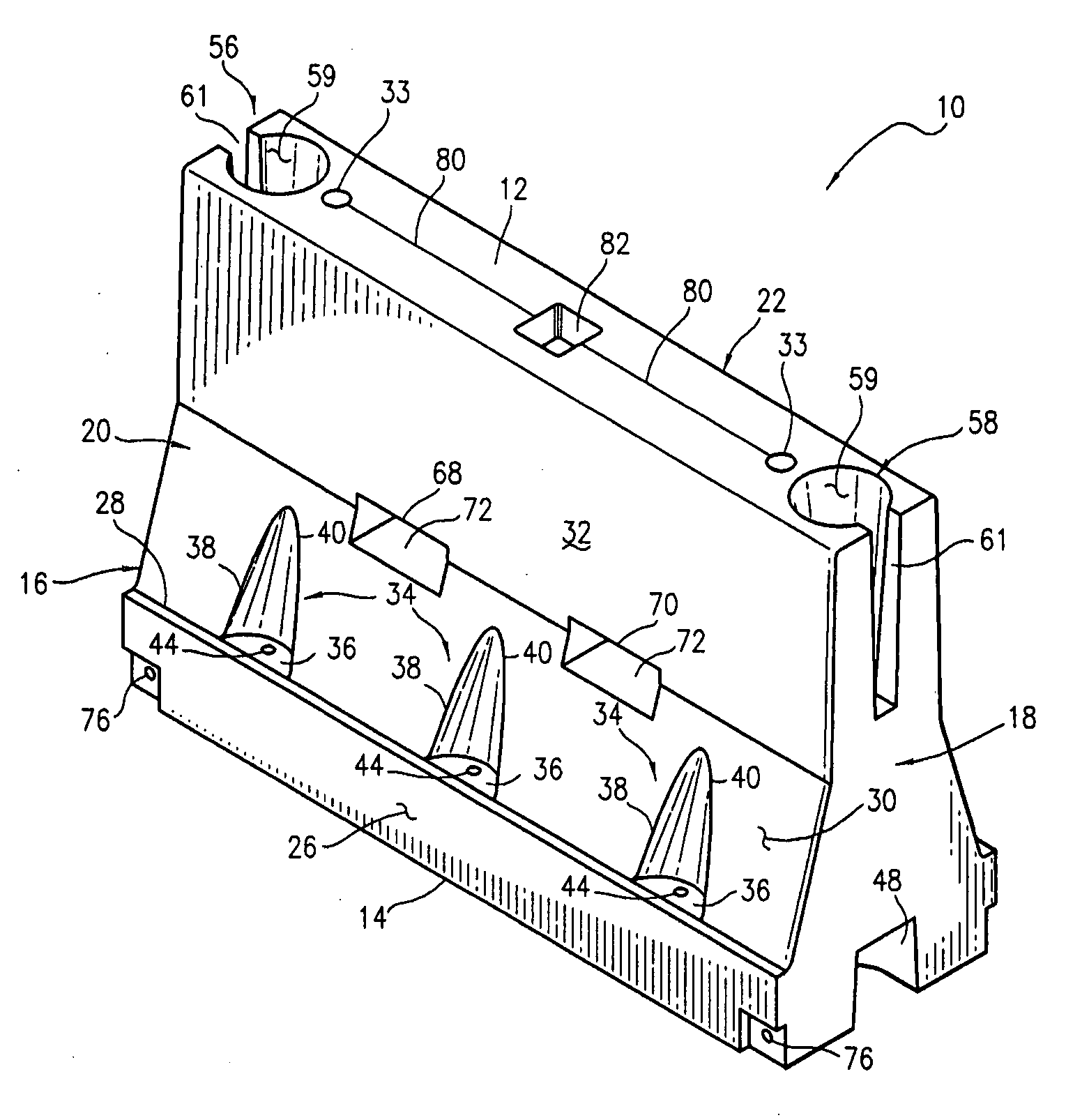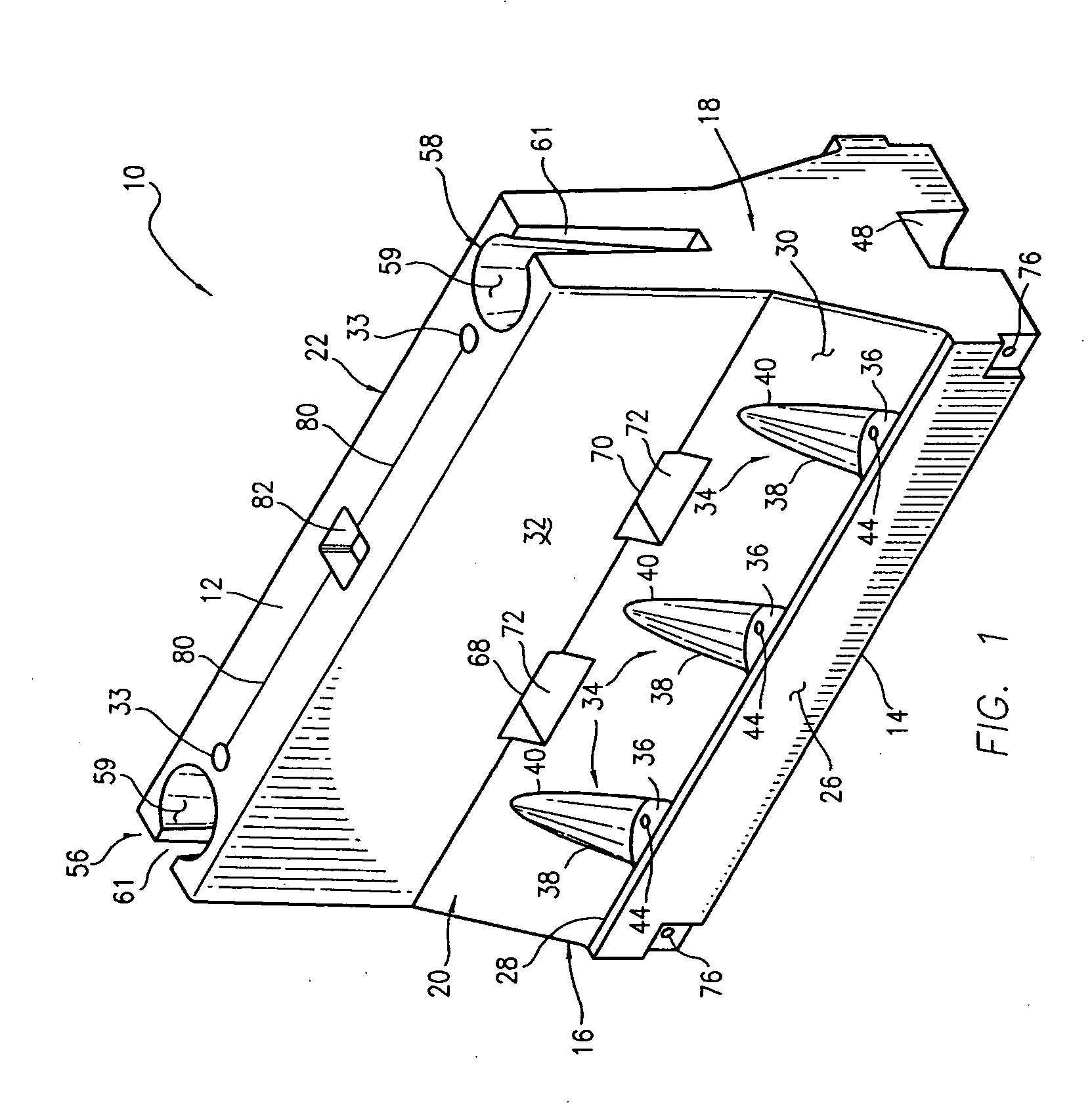Barrier device with external reinforcement structure
- Summary
- Abstract
- Description
- Claims
- Application Information
AI Technical Summary
Benefits of technology
Problems solved by technology
Method used
Image
Examples
Embodiment Construction
[0048] Referring initially to FIGS. 1-4, the barrier device 10 of this invention comprises a top wall. 12, a bottom wall 14, opposed end walls 16, 18, and, opposed side walls 20, 22 which are interconnected to collectively define a hollow interior 24. In the presently preferred embodiment, each of the walls 12-22 are formed of a semi-rigid plastic material chosen from the group consisting of low density polyethylene, high density polyethylene, acrylonitrile or butadiene styrene, high impact styrene, polycarbonates and the like. These plastic materials are all inherently tough and exhibit good energy absorption characteristics. They will also deform and elongate, but will not fail in a brittle manner at energy inputs which cause other materials to undergo brittle failure. The surfaces of these types of plastic materials are inherently smoother than materials from which other barriers are typically constructed, therefore creating less friction and reducing the likelihood of serious ab...
PUM
 Login to View More
Login to View More Abstract
Description
Claims
Application Information
 Login to View More
Login to View More - R&D
- Intellectual Property
- Life Sciences
- Materials
- Tech Scout
- Unparalleled Data Quality
- Higher Quality Content
- 60% Fewer Hallucinations
Browse by: Latest US Patents, China's latest patents, Technical Efficacy Thesaurus, Application Domain, Technology Topic, Popular Technical Reports.
© 2025 PatSnap. All rights reserved.Legal|Privacy policy|Modern Slavery Act Transparency Statement|Sitemap|About US| Contact US: help@patsnap.com



